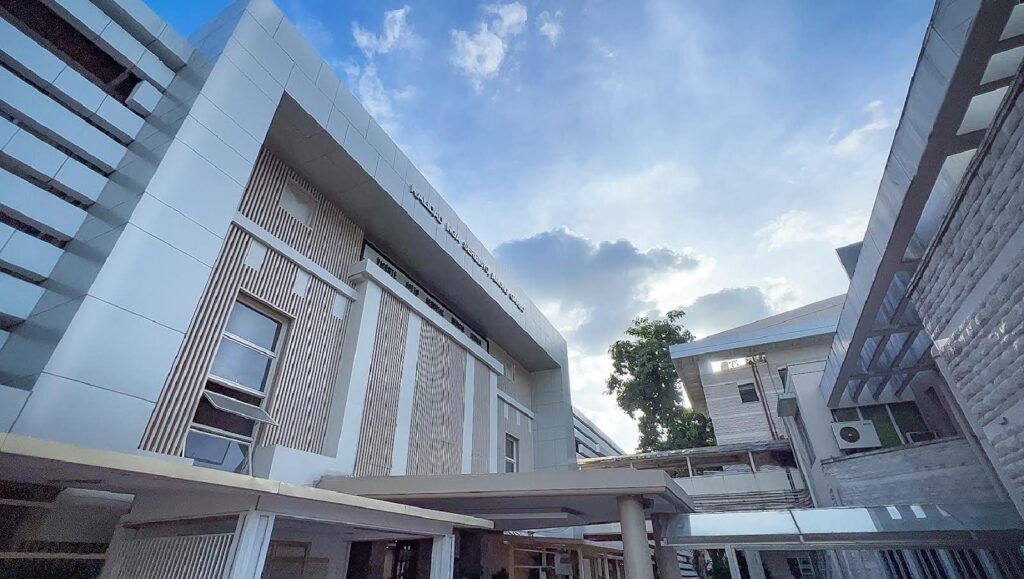Cobra bites: Where to get antivenom treatment when bitten by a venomous snake in Cebu

VSMMC has a polyvalent antivenom that is effective against the King Cobra (see photo), Samar Cobra, and the Philippine Cobra | CDN Digital file photo via AFP
CEBU CITY, Philippines — Despite the absence of commercially available antivenom treatment in the city, they can still receive antivenom treatment in this hospital in Cebu City.
According to Dr. Beethoven Bongon, toxicologist of the Vicente Sotto Memorial Medical Center (VSMMC), has antivenom treatment for the patients who need it.
READ MORE: What to do when bitten by a snake
However, VSMMC has guidelines on when and how to give the antivenom.
Guidelines
According to Bongon, antivenom is a “double-edged sword,” which means “it can treat you and it can also kill you” (if it is not properly administered).
“Limited gyud atong supply sa antivenom. That is why meticulous kaayo mi. E-examine gyud namo ang patient if indeed kinahanglan ba gyud niya ang antivenom treatment,” he said.
(The antivenom supply is really limited. That is why we are meticulous on this. We need to examine the patient if indeed the antivenom treatment is really needed.)
Because, he said, even if it is a venomous bite, it does not mean it would automatically manifest “envenomation” or the process where venom is injected through a bite or sting of a venomous animal.
“So, kana nga (that) type of patient, does not warrant antivenom treatment,” he added.
What to do when bitten by a snake
This would be why he advised that it would be better for the person to be checked first in the nearest health facility for first aid and basic life support: airway, breathing, and circulation.
Once the patient is stabilized, that is when they can call the poison center in VSMMC.
From there, they will help the district doctors evaluate the patient if they need to be transferred to VSMMC for antivenom treatment.
“Usa lang pod sa assurances nga pwede nako mahatag is, so far wala pa gyud mi [na receive] mga bites (cases) nga venomous,” he said.
(One of the assurances that we can give is, so far we have not [received] bites (cases) that are venomous.)
However, he advised the public to be vigilant because of the presence of King Cobras in Cebu Province as well as the pit vipers and sea snakes which also had neurotoxins.

VSMMC or the Vicente Sotto Memorial Medical Center is one of the hospitals in Cebu that has antivenom for venomous snakes. | Photo courtesy of VSMMC Office of the Strategy Management [File Photo]
Available antivenom in VSMMC
Bongon clarified that the antivenom in VSMMC was not the PCAV or the Purified Cobra Antivenin which would be provided by the RITM.
He said that PCAV is a monovalent antivenom. This means that it is only effective for a specific species and that is the Naja philippinensis (Philippine Cobra).
The antivenom in VSMMC is polyvalent. This means that it is effective against the three cobras: King Cobras, Philippine Cobra, and the Samar Cobra.
READ: Netizens on cobra spotted in San Fernando, Cebu: ‘Kahadlok!’
Not commercially available
Moreover, he said that the polyvalent antivenom in VSMMC only has the CSP or the Compassionate Special Permit issued by the Food and Drug Administration (FDA).
According to the FDA, CSP is a permit “signed by the FDA Director General granting a qualified institution such as the Department of Health (DOH), a Specialized Institution (SI), and a DOH-licensed hospital, or a qualified licensed physician the privilege to avail an unregistered or unauthorized drug product, vaccine, or medical device through an FDA-licensed establishment for its restricted use.”
“That is why CSP siya. Dili namo siya pwedeng mapagawas. Diri ra gyud na sa Sotto (VSMMC) gamiton. Same sa mga institutions that have the same antivenom. CSP ra pud na ang ilaha.”
Bongon said that this would mean that it had “no full” FDA approval.
Hence, this is the reason why it is not commercially available.
“That is why CSP siya. Dili namo siya pwedeng mapagawas. Diri ra gyud na sa Sotto (VSMMC) gamiton. Same sa mga institutions that have the same antivenom. CSP ra pud na ang ilaha,” he said.
(That is why this is CSP. We do not have the approval to release them. It is to be used only in Sotto (VSMMC). It is the same in institutions that have the same antivenom. They also have this as CSP.)
“For example nadala sa private hospital (ang patient). They need antivenom. Di na pwede namo mapagawas didto. Balhin gyud diri para diri e-administer,” he added.
(For example, (the patient) was brought to a private hospital. They need antivenom. We cannot release (the antivenom) there. The patient should transfer here so that it will be administered here.)
Moreover, the price of this antivenom is “free” when administered to the patient in VSMMC, Bongon said.
PCAV
RITM prioritizes the supplies of PCAV to the “high-risk areas” that have a large number of cases of snake bites, according to Bongon.
Since there have been fewer cases of snake bites involving cobras here in Cebu, this is also why PCAV is not supplied here.

Dr. Beethoven Bongon, a toxicologist from the Vicente Sotto Memorial Medical Center, talks with CDN Digital on matters concerning the antivenom treatment. | File photo from Niña Mae Oliverio
Antivenom is ‘not the only answer’
Bongon assures that in general, the antivenom is “not the only answer” to snake bite and there are ways to revive and support the patient.
“Diri sa atoa, ga identify pa ko kung unsay mga toxic agents dinhi. But base sa akong observations, murag naa ta sa industrial nga side. Kaning mga pollutants, heavy metals, so atong mga resource ari nato e direct para dili pod masayang atong budget.”
He said that they now had “networks of regional poison centers” designated “strategically” by DOH across the country.
“Kani nga poison centers, mag share mi og resources. En kaso og mahutdan mi dinhi, patawag dayon mi nila…makakuha dayon mi’g medicines from them kay every region has a focus [toxic] agent,” he said.
(These poison centers, we share our resources. In case we use up (our supply) here, we will call them right away…we can get the medicines from them because every region has a focus [toxic] agent.)
Cebu is not a venomous snake bite region
Since Cebu is not a “venomous snake bite nga region” compared with the agricultural regions, where there are more cases of bites, they have more resources of antivenom there.
“Diri sa atoa, ga identify pa ko kung unsay mga toxic agents dinhi. But base sa akong observations, murag naa ta sa industrial nga side. Kaning mga pollutants, heavy metals, so atong mga resource ari nato e direct para dili pod masayang atong budget,” he said.
(Here, I am still identifying what toxic agents we have here. But based on my observations, it seemed that we are on the industrial side. These pollutants, heavy metals, so we are directing our resources here so that our budget will not be wasted.)
‘Highly allergenic’
Bongon also shares that there is a need to be careful in administering the antivenom treatment because of the “side effects.”
“E-monitor man gyud na sila (patient) nga dili mag allergic reaction kay highly allergenic man kaayo ni siya nga (antivenom) nga pwede ma shock ang pasyente inig hatag nimo,” he said.
(We monitor (the patient) that the patient won’t have an allergic reaction because this (the antivenom) is highly allergenic and the patient can go into shock once we administer it.)

Dr. Beethoven Bongon | CDN File photo from Niña Mae Oliverio
Do’s and Don’ts when bitten by a snake
According to Bongon, not all the time that people can immediately identify whether a snake bite is venomous or non-venomous.
“Logic will tell you. First thing to do is [to] remove the patient from the exposure. E-safe gyud ang patient (Make sure that the patient is safe). Next thing to do is to clean the wound. Cover it with a clean cloth and then let the patient stay still. Limit some kind of movements kay kung lihok ang patient, mas ma promote ang circulation kung naay venom ang na-inject (if the patient will move, this will promote the circulation if there is a venom that is injected). After that, call for help then dalhon dayon sa (bring the patient to) nearest health facility,” he said.
Some don’ts
Meanwhile, here are also the things that people should not do—do not suck the wound, and do not put on a tourniquet.
READ: What you should do when bitten by a snake
“Mao ra ba gyud na siya ang common nga traditional nga buhaton sa mga tawo from the outskirts. Higtan dayon kay ang common notion is kung higtan, dili makasaka ang venom sa circulation when in fact dili lage siya makasaka in terms of blood flow but it can promote the lymphatic circulation so makatag gihapon siya,” he said.
(That is what is the common and traditional thing that people do from the outskirts. They put a tourniquet because the common notion is if you put a tourniquet, the venom will not go into circulation when in fact it cannot circulate in terms of blood flow but it can promote lymphatic circulation so it can still circulate the venom.)
“Mga 90 percent of bites—I’m talking about the whole Philippines. Mga 80-90 percent of snake bites do not need antivenom treatment. Those are the non-venomous bites.”
Some do’s
He said that it would be better to ask for help immediately like from the barangay to transport the victim to the nearest health facility.
He added that it would not be necessary to proceed immediately to VSMMC because there would be doctors in the nearest health facilities who could call VSMMC for “assistance for management.”
“Mga 90 percent of bites—I’m talking about the whole Philippines. Mga 80-90 percent of snake bites do not need antivenom treatment. Those are the non-venomous bites,” he said.
(About 90 percent of bites–I’m talking about the whole Philippines. About 80 to 90 percent of snake bites do not need antivenom treatment. Those are the non-venomous bites.)
Cebu Province: No snake bite patient that needs antivenom
In Cebu Province, he said that for the past three years, cases of snake bites were the top cases that they received in toxicological cases referred to VSMMC.
“Snake bites gyud ang number one sa agents. But for the past three years, wala pa gyud mi nakit-an nga snake bite patient that needs antivenom because all [cases] were non-venomous bites. And even if venomous ang nakapaak, it doesn’t mean nga hundred percent, nga mo manifest siya’g envenomation kay there are what we call dry bites,” he said.
(Snake bites are really the number one agents. But for the past three years, we had not seen a snake bite patient that needs antivenom because all [cases] were non-venomous bites. And even if a venomous snake was the one who bit, it doesn’t mean that one hundred percent envenomation will manifest because there are still what we call dry bites.)
A dry bite is a bite from a venomous snake but venom is not injected.
Hunting purposes
Bongon says that even if the snake is venomous, it does not necessarily inject a venom.
“Kini ilahang ability to inject venom is for hunting purposes. Dili na for attacking. Kung imo nang e-attack ang snake, syempre ang ilahang instinct is modefend sila. If they defend, there is a chance nga dili sila mo inject og venom but there’s a high chance nga mo inject sila’g venom kung mapakaan ka,” he said.
He says that it will help them if the victim (bitten by a snake or people helping the victim) will be able to capture the snake so when the victim arrives at the hospital, it would be easier to identify if the snake is venomous or not.
He said that if they followed the guidelines from the Research Institute for Tropical Medicine (RITM) when people had a bite from an “unknown snake” and they showed no manifestation (signs or symptoms), they would have to observe the patient for at least 24 hours from the bite.
“Kini ilahang ability to inject venom is for hunting purposes. Dili na for attacking. Kung imo nang e-attack ang snake, syempre ang ilahang instinct is modefend sila. If they defend, there is a chance nga dili sila mo inject og venom but there’s a high chance nga mo inject sila’g venom kung mapakaan ka.”
“Kay maybe, in that span of time mo appear ang symptoms sa envenomation,” he said.
(Because maybe, in that span of time, symptoms of envenomation will appear.)
“Kung na identify na nimo, naay picture or napatay ba [then] makakita dayon ka nga non-venomous, then right there and then, just do your routine: wound care. Clean. Give your tetanus prophylaxis, and give antibiotics. Way signs of cellulitis then let the patient go home,” he added.
(If you can identify that, then you have a picture or (the picture of the snake that) was killed, [then] we can see if the snake is non-venomous, then right there and then, just do your routine: wound care. Clean. Give your tetanus prophylaxis, and give antibiotics. If there are no signs of cellulitis, then let the patient go home.)

King Cobra | INQUIRER.net stock photo
Manifestations
With regards to snake bites, Bongon says that there are two manifestations: neurologic and hemolysin venom.
Neurologic means that the body will be paralyzed. It is common among cobra bites.
Its initial manifestations include extremity weakness, ptosis kanang murag katulgon tan-awn, nya mag hypersalivate (that is when you look like you are sleepy, and then you hypersalivate).
Meanwhile, hemolysin is common among viper snakes.
“Mahitabo ana, once mapaakan ka, wala kay neurologic symptoms, but ig-on imohang coagulation system. Mao nang magbleeding, then ang bite site mo-itom dayon. Moproduce og bullae (a large blister containing serous fluid or a fluid resembling a serum), to the point that it could cause a compartment syndrome,” he said.
(What will happen is once you are bitten, you don’t have neurologic symptoms, but it will hit your coagulation system. That is why you will experience bleeding, then the bite site will turn black. It will produce bullae [large blisters containing serous fluid or a fluid resembling a serum], to the point that it could cause compartment syndrome [or an increase in pressure inside a muscle that restricts blood flow and causes pain].)
According to him, venom is a “very complex protein” and the cobras in the Philippines have higher neurotoxin, but they also have hemotoxin.
READ MORE:
Cobras in the Philippines: What you should know about them
Cebu City lacks antivenom for snake bites–city vet
Snake bite kills young boy in Leyte, grieving sister pleads for anti-venom supply in rural areas
/dbs
Disclaimer: The comments uploaded on this site do not necessarily represent or reflect the views of management and owner of Cebudailynews. We reserve the right to exclude comments that we deem to be inconsistent with our editorial standards.
